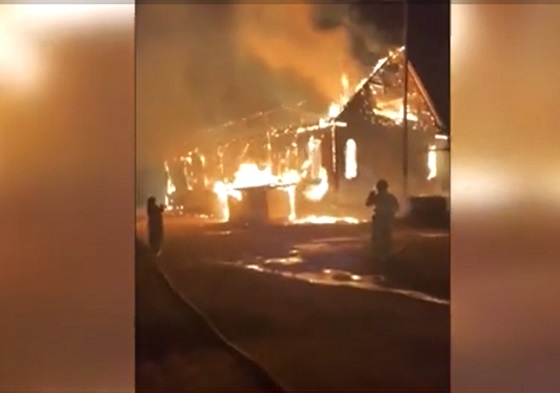Fraser Institute
Federal government’s ‘affordable housing’ strategy doomed without strong income growth

From the Fraser Institute
By Jake Fuss and Austin Thompson
Economist Mike Moffatt estimated that, if Canadian wages grow at the average rate seen over the past two decades—and if home prices remain stable—it would still take 20 years for Canada to achieve housing affordability levels of 2005… In other words, reality remains at odds with the Carney government’s ambitious rhetoric about delivering so-called “affordable homes.”
In a recent media scrum, the Carney government’s new federal housing minister Gregor Robertson—former mayor of Vancouver—was asked: “Should home prices go down?” His response: “No, I think that we need to deliver more supply, make sure the market is stable. We need to be delivering more affordable housing.”
Robertson’s response raises a follow-up question: what does the Carney government mean when it promises “affordable housing”?
Rising house prices are nothing new. The sticker price for the average Canadian home has increased in most years, barring periods such as the 2008–09 Global Financial Crisis. And house prices aren’t expected to fall anytime soon; forecasts point to continued house price growth. But for homebuyers, the key issue isn’t that prices are increasing; it’s whether they’re rising faster than incomes. By that measure, housing in Canada has become much less affordable in recent years.
Consider Minister Robertson’s tenure as Vancouver mayor from 2008 to 2018. During that time, the price of a typical single- or semi-detached Vancouver home grew from $690,000 to $1,980,000—a 187 per cent increase. Meanwhile, the after-tax income of a typical Vancouver family rose by just 15 per cent. Today, the typical single- or semi-detached home in Vancouver costs $2,380,000. Vancouver’s housing market is somewhat unique, but strong price increases reflect a broader national trend: home prices have risen dramatically even as income growth has stagnated, largely because housing demand—driven by immigration-fuelled population growth—continues to far exceed new housing construction.
Which takes us back to the question of “affordability.” Housing can become more “affordable” even as home prices rise, so long as the after-tax incomes of Canadians grow even faster. This has happened before—after-tax wage growth exceeded house price increases in the late 1980s, for example. Unfortunately, this seems unlikely to happen in the 2020s.
In fact, while house prices have soared, wage growth in Canada has stagnated. Consequently, in 2022 (the latest year of available comparable data), the typical worker in Alberta—Canada’s highest-wage province—earned less than the typical worker in low-wage U.S. states such as Mississippi and West Virginia. And from 2014 to 2024, Canada’s GDP per-person, an indicator of incomes and living standards, grew by a mere 2.0 per cent compared to 19.6 per cent in the United States.
In a recent analysis, economist Mike Moffatt estimated that, if Canadian wages grow at the average rate seen over the past two decades—and if home prices remain stable—it would still take 20 years for Canada to achieve housing affordability levels of 2005. And of course, much could go wrong—if wage-growth estimates fall short, mortgage rates rise or house prices rise, then that slow march towards housing affordability may never end for many Canadians including young people looking to start a family.
In other words, reality remains at odds with the Carney government’s ambitious rhetoric about delivering so-called “affordable homes.”
Again, the government wants to double the rate of homebuilding in Canada in a decade. Is that possible? Currently, Canada lacks the required savings and investment to fund that level of building. And due to tepid growth of our construction workforce, we currently do not have the manpower to build twice as many homes. And as always, local opposition to rapid housing development in certain neighbourhoods and public lands may also prove hard to overcome.
But even if somehow Canada was able to marshal the resources and political capital required for such a feat, according to Minister Robertson, the end result would only be to “make sure the market is stable.” Stable, based on today’s prices, means unaffordable for many Canadians unless incomes rise. Clearly, housing supply is only half the battle. To achieve housing affordability on any reasonable timeline, the government must not only help facilitate a major expansion in homebuilding but also substantial growth in Canadian incomes—something the Trudeau government failed to do.
The key is investment, which is required to expand the housing supply, grow Canada’s economy and boost wages. In a capital-scarce economy such as Canada’s, these goals may compete with one another. So governments in Canada, including the Carney government, must adopt policies that attract investment, such as streamlining regulation and reforming capital gains taxes. And crucially, rising incomes will only translate into improved affordability if Canadians can keep more of what they earn, which will difficult given that anticipated increases in federal spending will ultimately result in a higher tax burden. Ottawa must also craft immigration and residency policies so population growth doesn’t continue to overwhelm housing supply and further increase prices.
Canadians should think about housing affordability not just in terms of housing supply but as part of a broader economic challenge—one that also depends on growing the economy, increasing savings and investment, and limiting how much governments take in taxes. Only a comprehensive strategy, centered on broad-based growth, will make the dream of homeownership a reality for generations of Canadians.
Business
Federal Budget 2025: A responsible media would ensure Canadians know about the dismal state of federal finance

From the Fraser Institute
By Jake Fuss and Grady Munro
From 2014 to 2024, gross government debt (including federal, provincial and local governments) increased from 85.5 per cent of the economy (measured by GDP) to 110.8 per cent—a larger increase than any other G7 country. When debt grows faster than the economy, government finances are unsustainable.
Ahead of the Carney government’s long-awaited first budget scheduled for Nov. 4, a recent CBC commentary described the long-standing debate about the federal deficit and the state of federal finances as “something of a phoney war.” And that calls to balance the budget—expressed today and over the last decade—have lacked any serious discussion about the trade-offs between allowing deficits to persist versus balancing the budget.
While there’s certainly something to be said about the political theatre that regularly dominates the House of Commons—which we agree focuses too often on scoring political points instead of adequately assessing the merits of policy—it’s wrong to downplay concerns about the state of federal finances. Such concerns aren’t “phoney.”
Consider this. From 2014 to 2024, gross government debt (including federal, provincial and local governments) increased from 85.5 per cent of the economy (measured by GDP) to 110.8 per cent—a larger increase than any other G7 country. And federal gross debt increased from 53.0 per cent of the economy in 2014/15 to a projected 70.0 per cent in 2024/25. When debt grows faster than the economy, government finances are unsustainable. And the Carney government seemingly plans to continue this same approach.
In other words, the government plans to continue to spend more than it collects in revenue, continue to run massive deficits, and continue to rack up large amounts of debt.
Why should Canadians care?
Because the costs of government debt land squarely on their backs. For example, when government debt levels rise, the cost of debt interest often also rises. This year the federal government will spend a projected $54.5 billion on debt interest costs—equivalent to what it sends to the provinces for health care. Moreover, when governments borrow money, they can help drive up the cost of borrowing by increasing demand for the limited pool of savings that both government and the private sector compete for—making it more expensive for a family to take out a mortgage or businesses to attract investments. And to pay for today’s debt accumulation, governments in the future may raise taxes—a burden that will fall disproportionately on younger generations.
Again, given this alarming deterioration in the state of government finances over the last decade and the costs it imposes on Canadians, there’s nothing disingenuous about calling for more fiscal discipline from Ottawa.
Of course, getting federal finances back in order is no small task—the Trudeau government’s forays into areas of provincial jurisdiction (which carry huge price tags), combined with Carney’s massive new spending commitments for defence and other programs, mean the government cannot balance the budget without significant trade-offs. In the past, the federal government has overcome similar fiscal circumstances by committing to balance the budget and outlining a clear plan to achieve this goal. The Carney government should heed these lessons and apply them in its upcoming budget.
Alberta
Alberta taxpayers should know how much their municipal governments spend

From the Fraser Institute
By Tegan Hill and Austin Thompson
Next week, voters across Alberta will go to the polls to elect their local governments. Of course, while the issues vary depending on the city, town or district, all municipal governments spend taxpayer money.
And according to a recent study, Grande Prairie County and Red Deer County were among Alberta’s highest-spending municipalities (on a per-person basis) in 2023 (the latest year of comparable data). Kara Westerlund, president of the Rural Municipalities of Alberta, said that’s no surprise—arguing that it’s expensive to serve a small number of residents spread over large areas.
That challenge is real. In rural areas, fewer people share the cost of roads, parks and emergency services. But high spending isn’t inevitable. Some rural municipalities managed to spend far less, demonstrating that local choices about what services to provide, and how to deliver them, matter.
Consider the contrast in spending levels among rural counties. In 2023, Grande Prairie County and Red Deer County spent $5,413 and $4,619 per person, respectively. Foothills County, by comparison, spent just $2,570 per person. All three counties have relatively low population densities (fewer than seven residents per square kilometre) yet their per-person spending varies widely. (In case you’re wondering, Calgary spent $3,144 and Edmonton spent $3,241.)
Some of that variation reflects differences in the cost of similar services. For example, all three counties provide fire protection but in 2023 this service cost $56.95 per person in Grande Prairie County, $38.51 in Red Deer County and $10.32 in Foothills County. Other spending differences reflect not just how much is spent, but whether a service is offered at all. For instance, in 2023 Grande Prairie County recorded $46,283 in daycare spending, while Red Deer County and Foothills County had none.
Put simply, population density alone simply doesn’t explain why some municipalities spend more than others. Much depends on the choices municipal governments make and how efficiently they deliver services.
Westerlund also dismissed comparisons showing that some counties spend more per person than nearby towns and cities, calling them “apples to oranges.” It’s true that rural municipalities and cities differ—but that doesn’t make comparisons meaningless. After all, whether apples are a good deal depends on the price of other fruit, and a savvy shopper might switch to oranges if they offer better value. In the same way, comparing municipal spending—across all types of communities—helps Albertans judge whether they get good value for their tax dollars.
Every municipality offers a different mix of services and those choices come with different price tags. Consider three nearby municipalities: in 2023, Rockyview County spent $3,419 per person, Calgary spent $3,144 and Airdrie spent $2,187. These differences reflect real trade-offs in the scope, quality and cost of local services. Albertans should decide for themselves which mix of local services best suits their needs—but they can’t do that without clear data on what those services actually cost.
A big municipal tax bill isn’t an inevitable consequence of rural living. How much gets spent in each Alberta municipality depends greatly on the choices made by the mayors, reeves and councillors Albertans will elect next week. And for Albertans to determine whether or not they get good value for their local tax dollars, they must know how much their municipality is spending.
-

 Red Deer2 hours ago
Red Deer2 hours agoThe City of Red Deer’s Financial Troubles: Here Are The Candidates I Am Voting For And Why.
-

 Alberta2 days ago
Alberta2 days agoClick here to help choose Alberta’s new licence plate design
-

 International2 days ago
International2 days agoDaughter convinces healthy father to die in double assisted suicide with mother
-

 International2 days ago
International2 days agoHamas will disarm or die
-

 International2 days ago
International2 days agoUS Warns Hamas To Halt Executions
-

 illegal immigration2 days ago
illegal immigration2 days agoLos Angeles declares a state of emergency over ICE deportations
-

 Indigenous2 days ago
Indigenous2 days agoConstitutional lawyer calls for ‘false’ claims to end in Canadian residential schools burials
-

 Business2 days ago
Business2 days ago‘Taxation Without Representation’: Trump Admin Battles UN Over Global Carbon Tax








